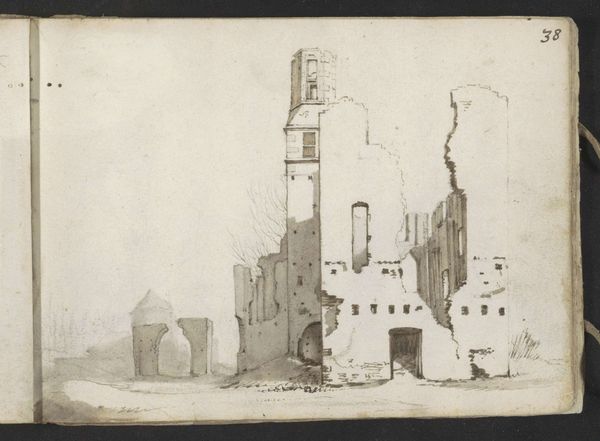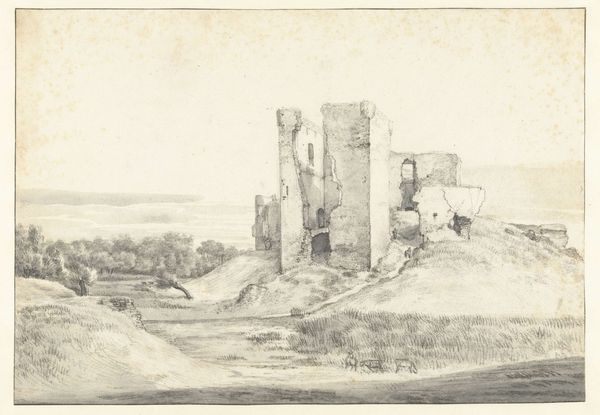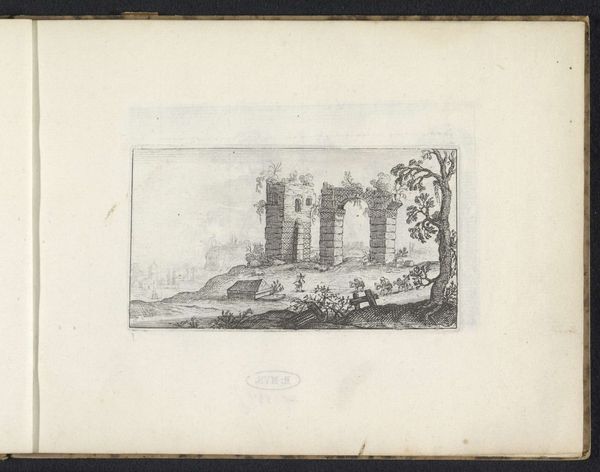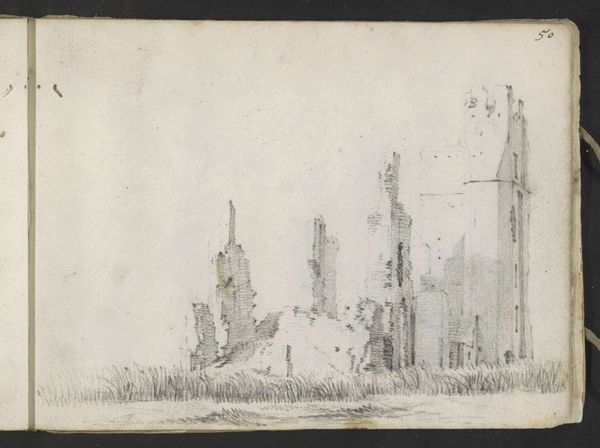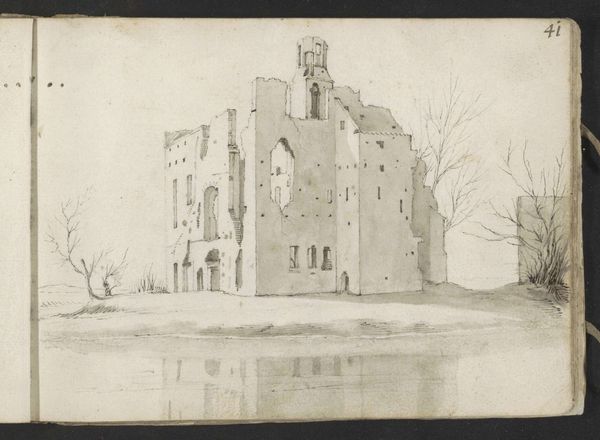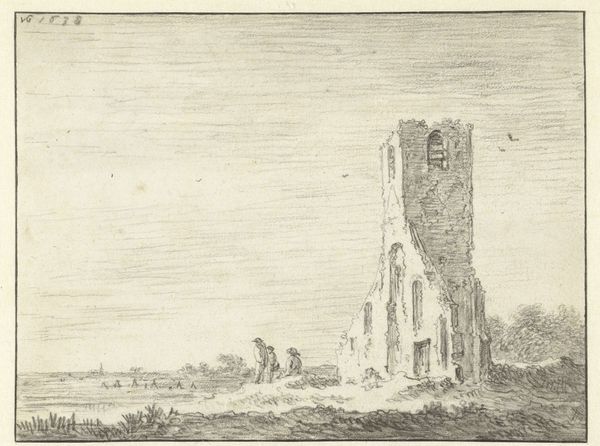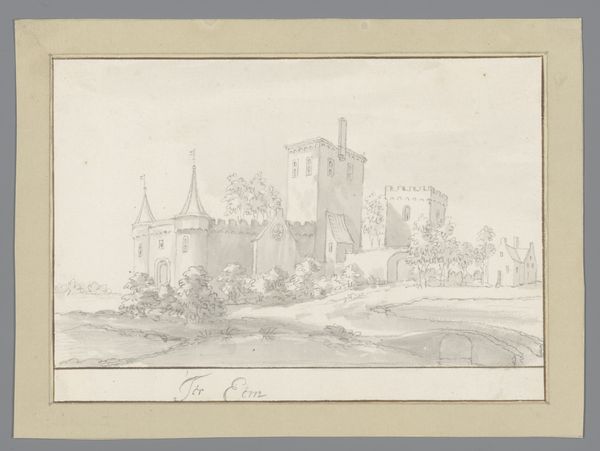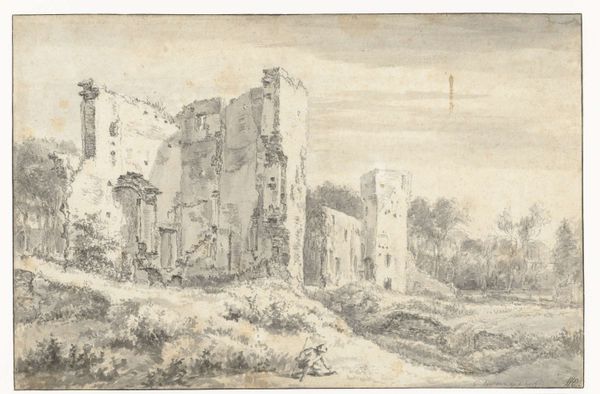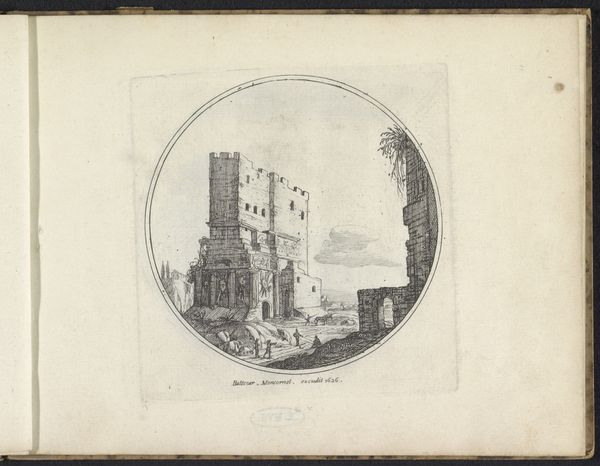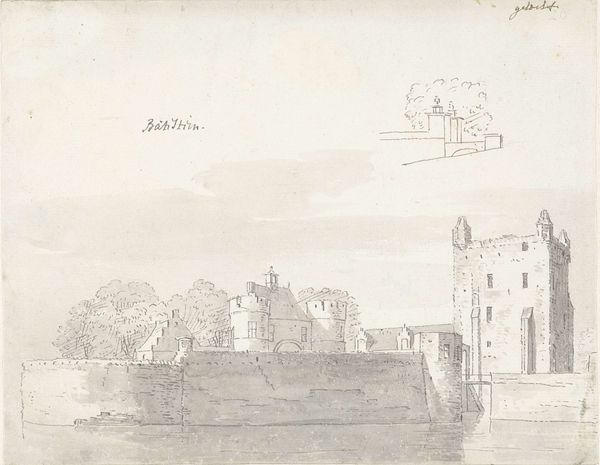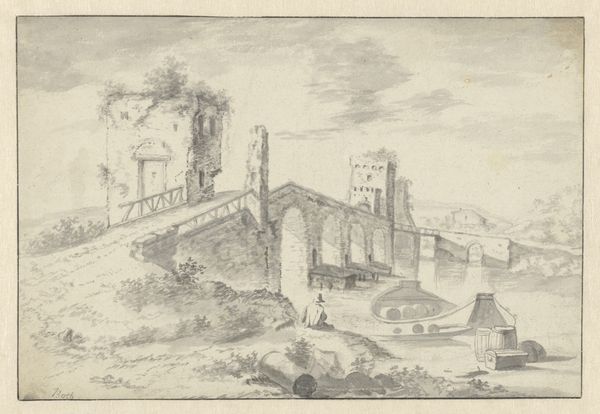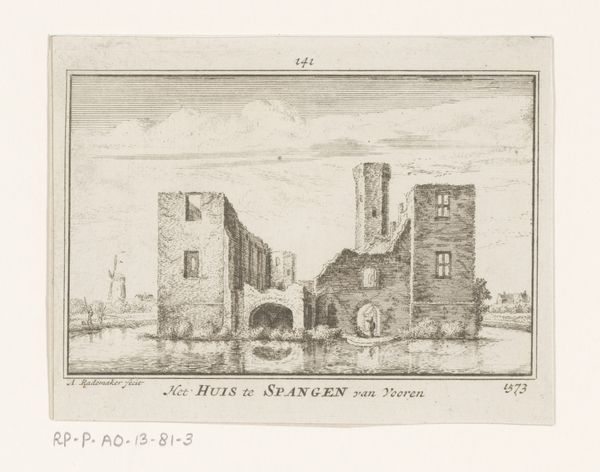
drawing, tempera, paper, ink, architecture
#
drawing
#
tempera
#
dutch-golden-age
#
landscape
#
paper
#
ink
#
architecture
#
realism
Copyright: Rijks Museum: Open Domain
Editor: This is Gerard ter Borch's "Ruïne van Kasteel Brederode," made in 1634, using ink, tempera and other drawing media on paper. There’s a somber mood looking at these crumbling ruins, a ghost of its former self. How should we interpret the artist's choice of subject matter here? Curator: Indeed. The choice of ruins, especially during the Dutch Golden Age, reflects a broader interest in themes of mortality and the transience of power. The Brederode Castle was not just a building; it represented a lineage with significance in Dutch history, tied to resistance against Spanish rule. Borch, by depicting its ruins, engages with a narrative of national identity and loss. Editor: So, it's more than just a landscape? Was the ruin a popular symbol? Curator: Precisely. While aesthetically pleasing as a landscape study, ruins like this served as a potent political and social reminder. Think about the socio-political context: the recently concluded Eighty Years' War. Depicting such a ruin wasn't merely nostalgic; it subtly highlighted the costs of conflict and the impermanence of earthly authority, acting almost as a moralizing symbol to viewers of the time. Consider who would have viewed this work, and where. How would the location of the art add meaning? Editor: That makes perfect sense. It's a stark reminder, subtly woven into a landscape. I now see that ruins can speak volumes about the present. Curator: Yes, it prompts reflection on the cycle of power, destruction, and memory, connecting historical events to the everyday lives of its contemporary viewers. Appreciating those socio-political links adds incredible meaning.
Comments
No comments
Be the first to comment and join the conversation on the ultimate creative platform.
